Today’s Tidbit... Lighting A Fire Under Your Team
We often describe football teams as fired up, sometimes as burned out, but we use those terms analogously, not literally. However, there have been occasions when fires in school gymnasiums or stadiums wiped out the football team’s gear during the season, leading equipment managers, coaches, and others to scramble to replace it so practice and games could continue.
The construction of modern university athletic facilities involves far less wood nowadays than in the past. Plus, the buildings come equipped with smoke detection and sprinkler systems, so the fires that occur cause less damage. Gymnasiums and other athletic facilities of old sometimes burned to the ground, destroying everything inside, including teams uniforms and gear, so imagine the task at hand when such losses occurred during the football season.
Cornell learned its lesson the hard way in 1912, when a Friday-morning fire destroyed the Witherbee Memorial Clubhouse, where it stored the 120-man-strong football team’s gear. Also lost was some baseball gear and the 1912 Olympic uniform of track star John Paul Jones. With a game scheduled the next day against Washington and Jefferson, the trainers and coaches quickly found enough gear to play, and a $1,000 donation eased the pain of buying replacements. However, while they could replace the uniforms purchased from sporting good manufacturers, coach Al Sharpe thought the most significant loss was the paper-mâché leg, arm, and shoulder pads that assistant trainer Frank Sheehan had custom-fit for each varsity player.
The pictures below show the 1912 and 1913 teams wearing seemingly identical uniforms, so while they replaced the uniforms with ease; not so much the custom-fit pads.
Virginia Tech’s 1923 team faced a similar challenge when the school gymnasium burned down the Sunday after the Clemson game. All the school’s football, basketball, and baseball equipment was gone, as was the school’s basketball court. Also problematic in a town like Blacksburg in the 1920s was the dearth of hotels. Visiting teams playing schools in remote areas often slept on cots in the host school’s gymnasium the night before games, so that convenience disappeared as well.
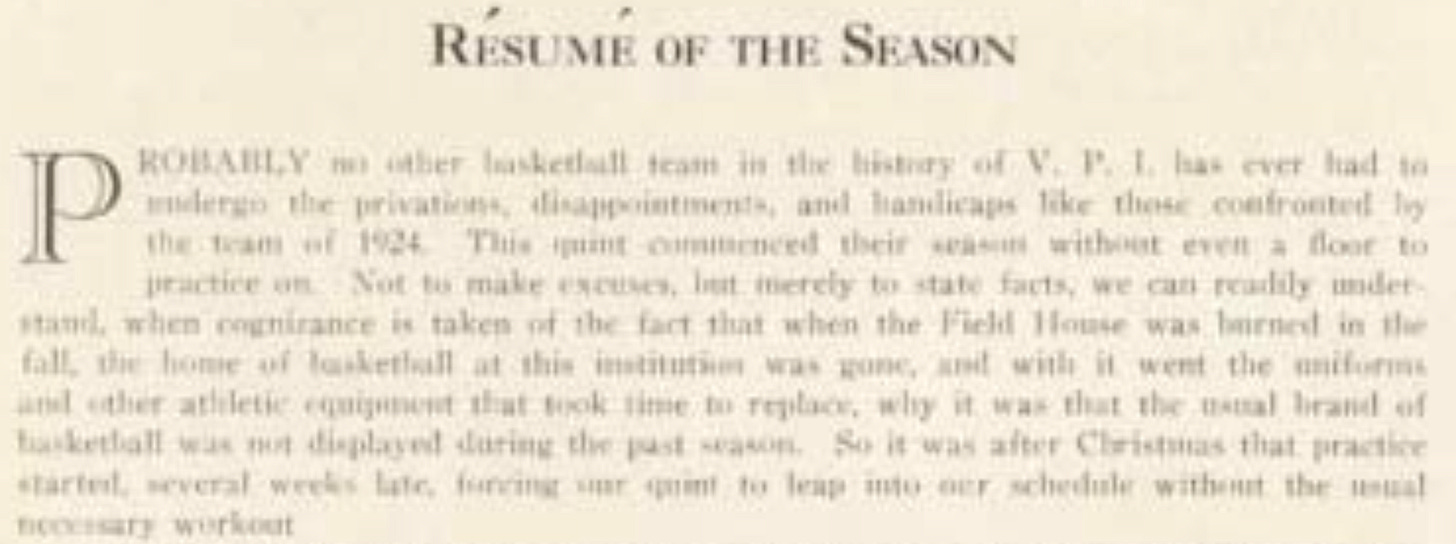
To remedy the football equipment situation, the Gobblers coach, B. C. Cubbage, boarded a train bound for Washington, D.C., and Philadelphia, where he bought as much equipment as he could find, then returned to town and had the team practice in full gear on Thursday.
A similar situation affected Georgia Tech in 1927 when the equipment room within Grant Field went up in smoke the Thursday morning before playing North Carolina.
Georgia Tech lost its game uniforms, but not its practice gear, though it also lost many banners, trophies, and other relics of its football history.
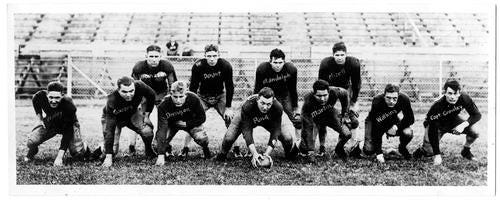
No one was injured in the writing of this Tidbit or in the conflagrations described herein. Oddly, after the teams scrambled to replace their uniforms, there was limited mention in the local newspapers of the gear they wore in their next games. Each of the teams that lost their uniforms to fires won those games, so while lighting a fire under your team might be effective, but there’s no need to play with matches to do so.
If you enjoy Football Archaeology, become a free subscriber or a paid subscriber for $5/month or $50/year.


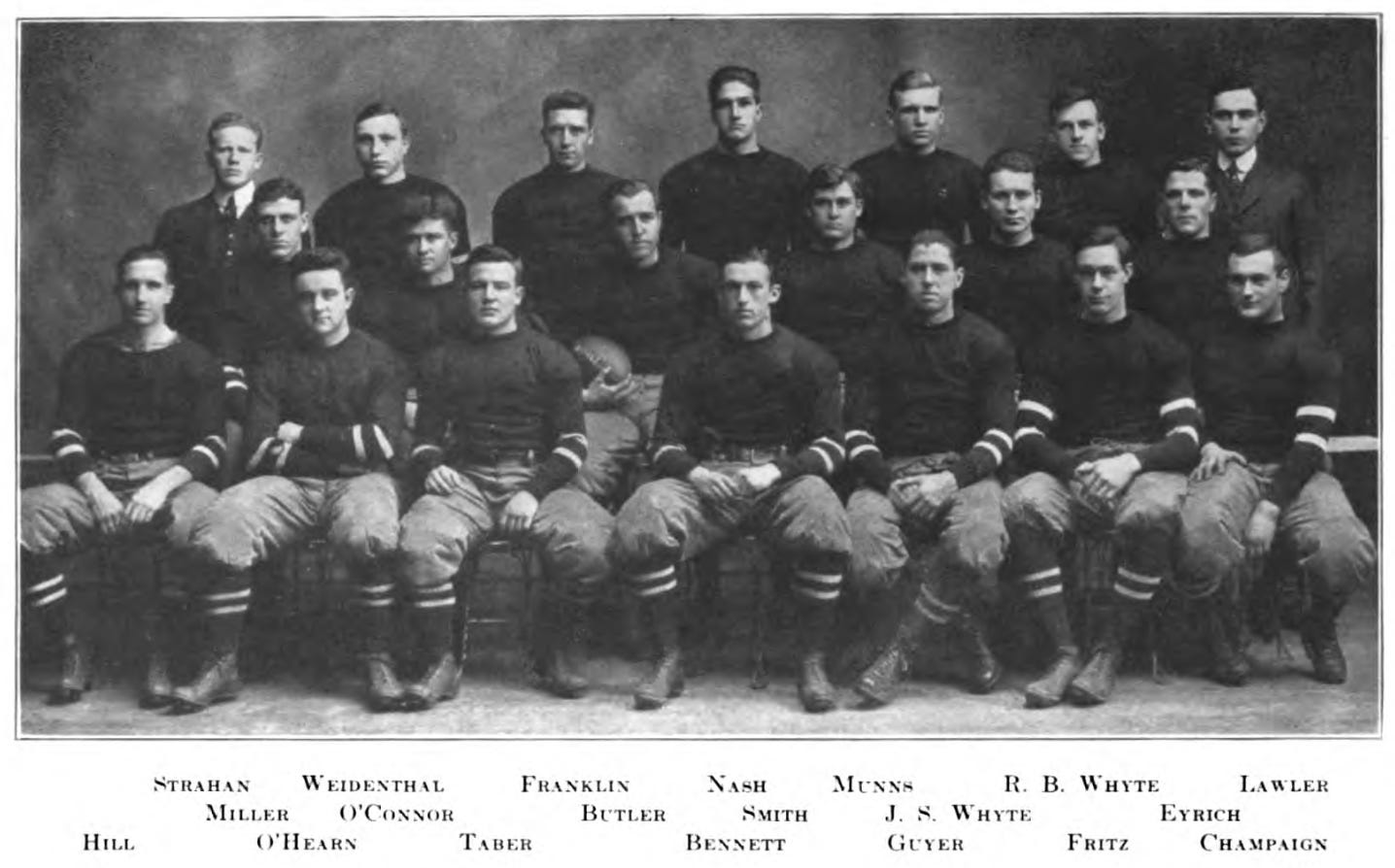
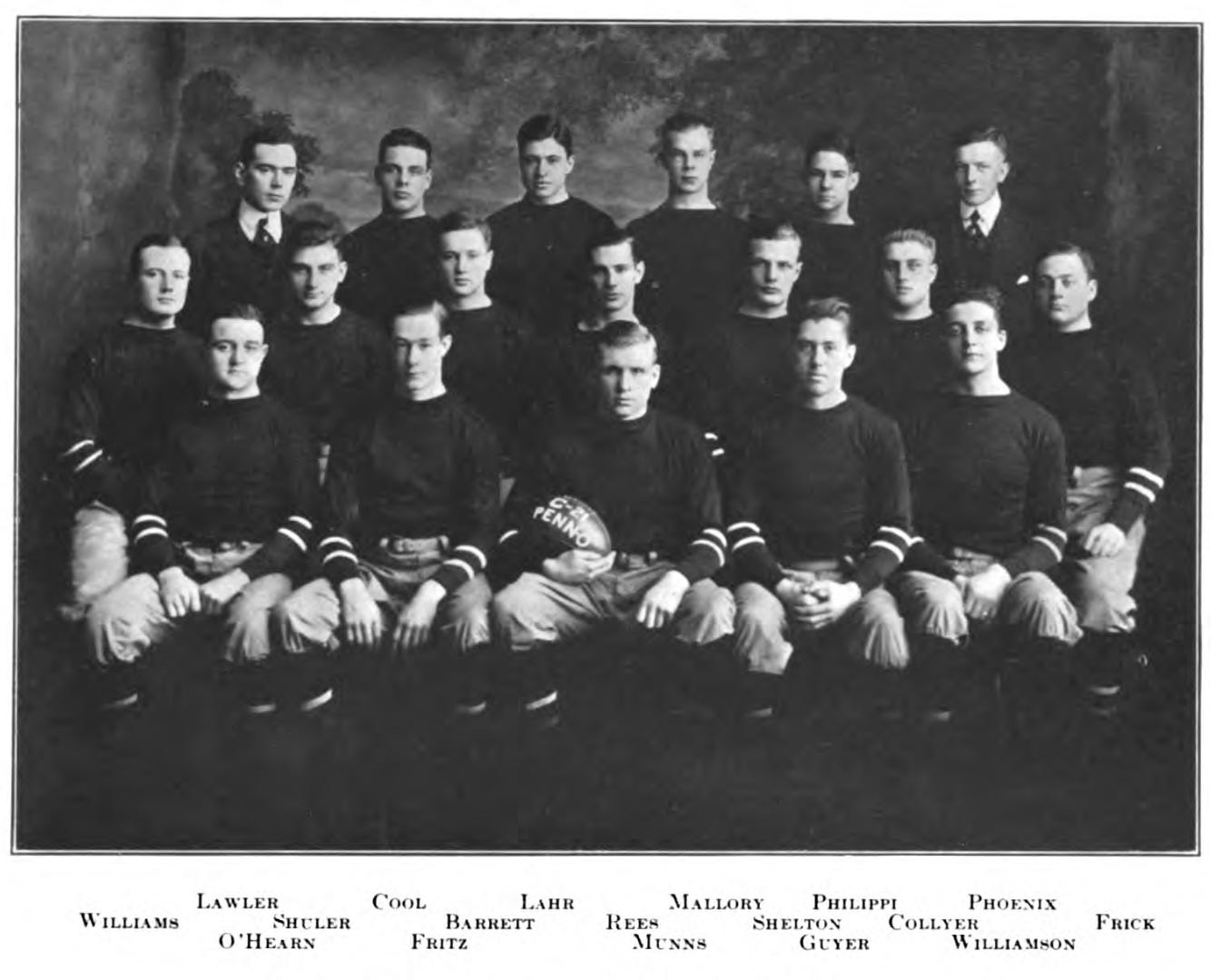
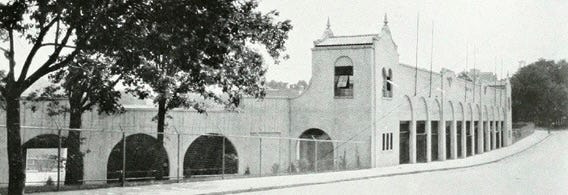

Interesting one…